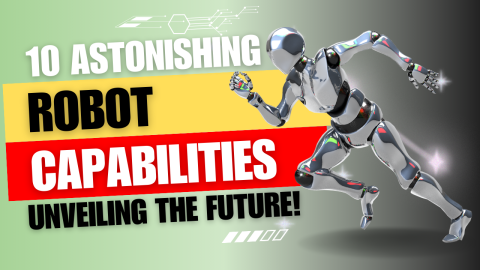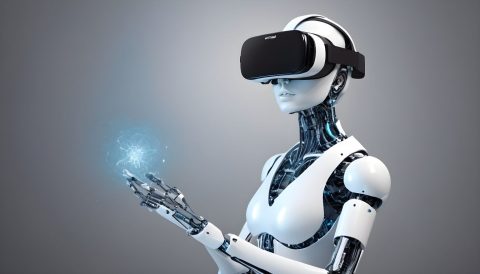latest trends in information and communication technology
Introduction:
In today’s rapidly evolving digital landscape, staying abreast of the latest trends in information and communication technology (ICT) is paramount for individuals and businesses alike. From Artificial Intelligence (AI) to 5G technology, the realm of ICT is witnessing groundbreaking advancements that are reshaping how we interact, work, and live. This article delves into the current trends driving innovation in ICT and offers insights into the future of technology.
The latest trends in information and communication technology:
The latest trends in information and communication technology (ICT) are shaping the landscape of connectivity. Among these trends, the Internet of Things (IoT) stands out, facilitating seamless communication and data exchange between interconnected devices. From smart homes to industrial applications, IoT is driving unprecedented levels of automation and connectivity. Other notable trends include advancements in artificial intelligence (AI), 5G technology, cybersecurity measures, and the widespread adoption of cloud computing solutions. These trends collectively redefine how we interact with technology, opening new possibilities for innovation and efficiency.
1-Artificial Intelligence (AI) and Machine Learning (ML)
One of the most significant trends in ICT is the proliferation of AI and ML technologies. These cutting-edge innovations empower machines to learn from data, recognize patterns, and make intelligent decisions without human intervention. From virtual assistants like Siri and Alexa to predictive analytics in healthcare and finance, AI and ML are revolutionizing various industries, enhancing efficiency, and driving innovation.
2- Internet of Things (IoT)
The latest trends in information and communication technology have propelled the Internet of Things (IoT) into the spotlight, driving its momentum forward. IoT facilitates seamless communication and data exchange among a diverse range of interconnected devices and systems, thereby laying the foundation for the emergence of smart homes, cities, and industries. With the advent of IoT, a multitude of devices, including smart thermostats, wearable gadgets, industrial sensors, and autonomous vehicles, are seamlessly interconnected, ushering in a new era of unprecedented connectivity and automation.
3- 5G Technology
The advent of 5G technology heralds a new era of connectivity characterized by blazing-fast internet speeds, ultra-low latency, and massive device connectivity. With its capacity to support emerging technologies such as augmented reality (AR), virtual reality (VR), and autonomous vehicles, 5G promises to revolutionize communication networks and unlock novel applications across industries.
4- Cybersecurity
As organizations increasingly rely on digital infrastructure to conduct business, cybersecurity has emerged as a top priority. With the proliferation of cyber threats such as malware, ransomware, and phishing attacks, robust cybersecurity measures are essential to safeguarding sensitive data and mitigating risks. The adoption of advanced security solutions, including encryption, biometrics, and behavioral analytics, is crucial to fortifying defenses against evolving cyber threats.
5- Cloud Computing
Cloud computing continues to reshape the ICT landscape, offering scalable and cost-effective solutions for storing, processing, and accessing data. From public and private clouds to hybrid and multi-cloud environments, organizations are leveraging cloud platforms to drive innovation, enhance agility, and streamline operations. The shift towards cloud-native architectures and serverless computing models is enabling businesses to harness the full potential of cloud technology.
6- Impact of COVID-19 on ICT Trends
The COVID-19 pandemic has accelerated digital transformation efforts and reshaped ICT trends in profound ways. With remote work becoming the new norm, there has been a surge in demand for collaboration tools, remote access solutions, and cloud-based services. Additionally, the healthcare sector has witnessed rapid adoption of telemedicine platforms, AI-driven diagnostics, and digital health monitoring systems to cope with the challenges posed by the pandemic.
7- Future Predictions for ICT
Looking ahead, the future of ICT holds immense promise, fueled by ongoing technological advancements and evolving consumer demands. Emerging technologies such as quantum computing, edge computing, and blockchain are poised to disrupt traditional paradigms and unlock new opportunities for innovation. As ICT continues to evolve, businesses and individuals must embrace change, adapt to new realities, and leverage technology to drive positive outcomes in an increasingly interconnected world.
Conclusion:
In conclusion, the latest trends in information and communication technology are reshaping the way we live, work, and interact with the world around us. From AI and IoT to 5G technology and cybersecurity, the pace of innovation in ICT shows no signs of slowing down. By staying informed and embracing technological advancements, we can harness the power of ICT to drive progress, foster innovation, and create a brighter future for all.







[…] latest trends in information and communication technology […]
[…] Read about latest trends in information and communication technology […]
[…] information technology goals and objectives examples […]
[…] Intelligence refers to the simulation of human intelligence processes by machines, particularly computer systems. These processes include learning, reasoning, and self-correction. AI is capable of […]